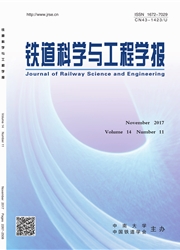

 中文摘要:
中文摘要:
为更快、更精确地确定斜拉桥合理施工状态,使其成桥后达到合理成桥目标状态,从目前确定斜拉桥合理施工状态常用的无应力状态控制法、倒拆-正装迭代法及正装迭代法的基本理论出发,以一座人行斜拉桥为项目依托建立三维空间有限元模型,通过对比分析3种方法在确定合理施工状态的实际应用及结果,得出了各方法在考虑混凝土收缩徐变效应时收敛本质及优缺点。研究结果表明:无应力状态控制法是通过对斜拉索无应力索长进行直接修正逐次逼近合理成桥目标状态;倒拆-正装迭代法及正装迭代法是通过对斜拉索到位索力进行直接修正逐次逼近合理成桥目标状态;无应力状态控制法收敛速度最快,计算精度最高,倒拆-正装迭代法次之,正装迭代法收敛速度最慢。
 英文摘要:
英文摘要:
For faster and more accurate to determine the rational construction state of cable-stayed bridges, and make the bridge meet the reasonable bridge state, this article take the basic theory of the unstressed state control method、the backward-forward iteration method and the forward-iteration method as the starting point, and a three-dimensional finite element model is built by using a pedestrian cable-stayed bridge as a project. By comparing and analyzing the practical application and analysis results of the three methods to determine the reasonable construction state , the convergence and the advantages and disadvantages of each method are obtained in the consideration of the shrinkage and creep effect of concrete. The results indicate that the unstressed state control method make the unstressed cable length modified gradually approaching to the reasonable bridge state; The backward-forward iteration method and the forward-iteration method make the final cable force modified gradually approaching to the reasonable bridge state; The unstressed state control method has the fastest convergence speed and the highest accuracy, the backward-forward iteration method is slower, the forward-iteration method Is the slowest.
 同期刊论文项目
同期刊论文项目
 同项目期刊论文
同项目期刊论文
 期刊信息
期刊信息
